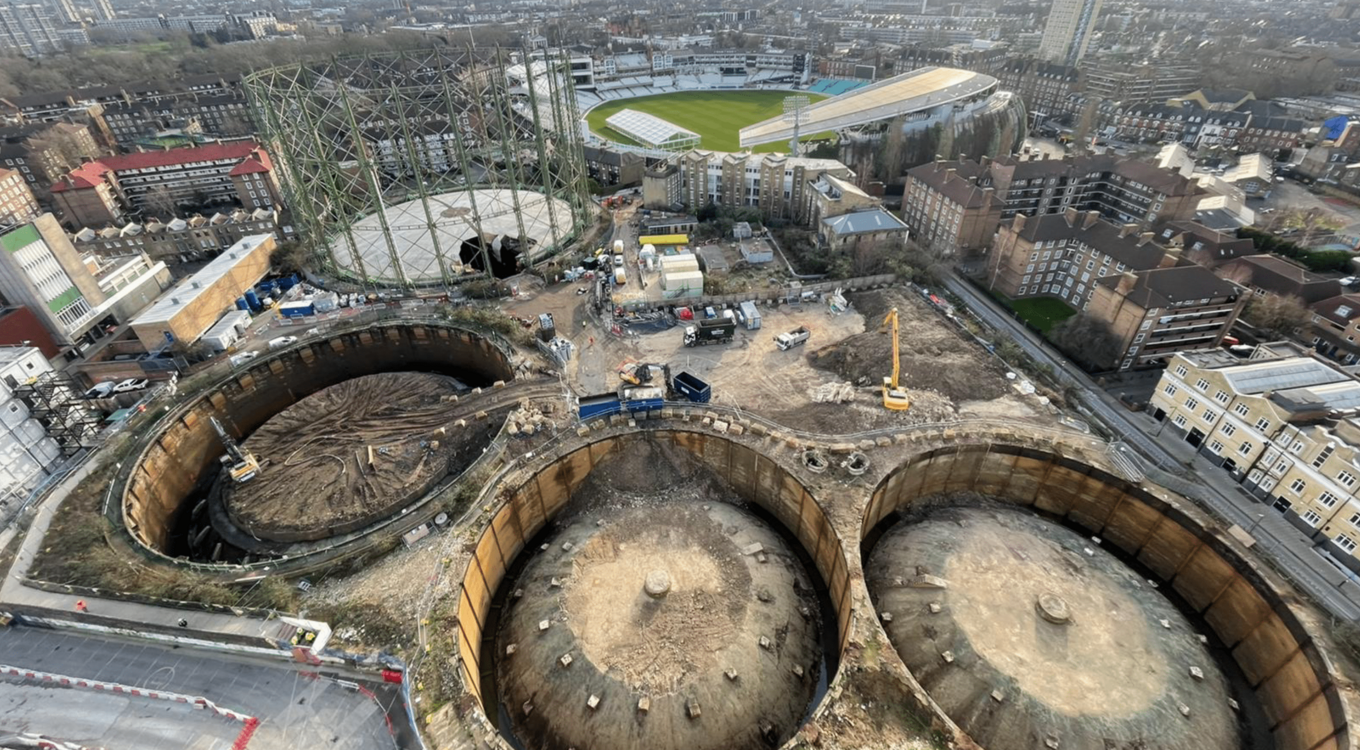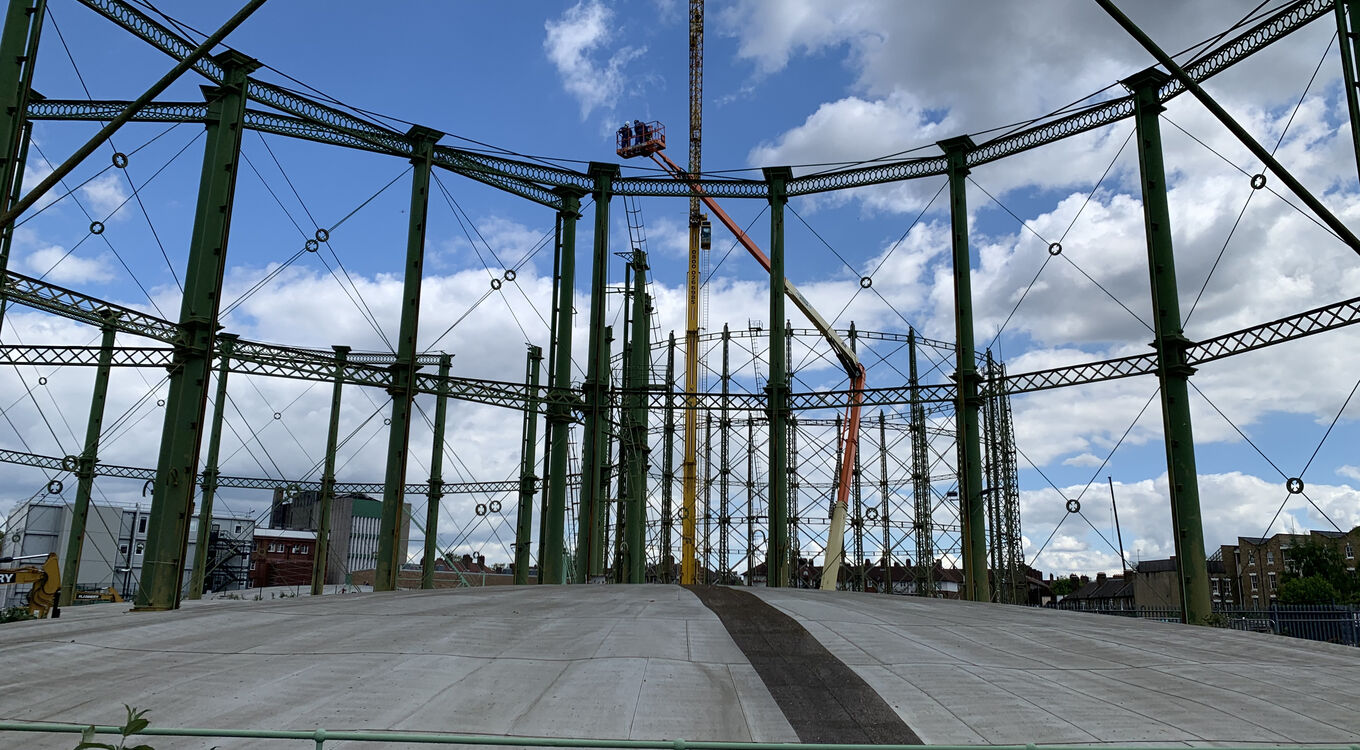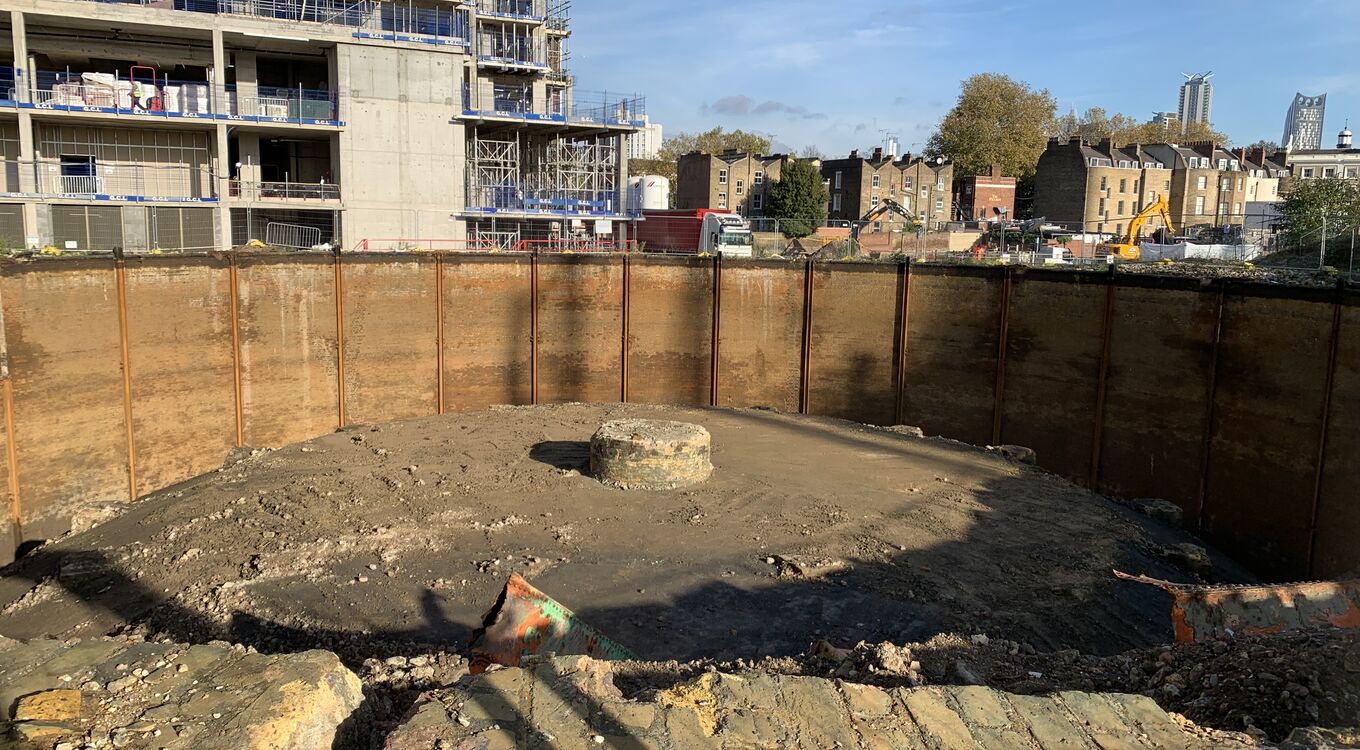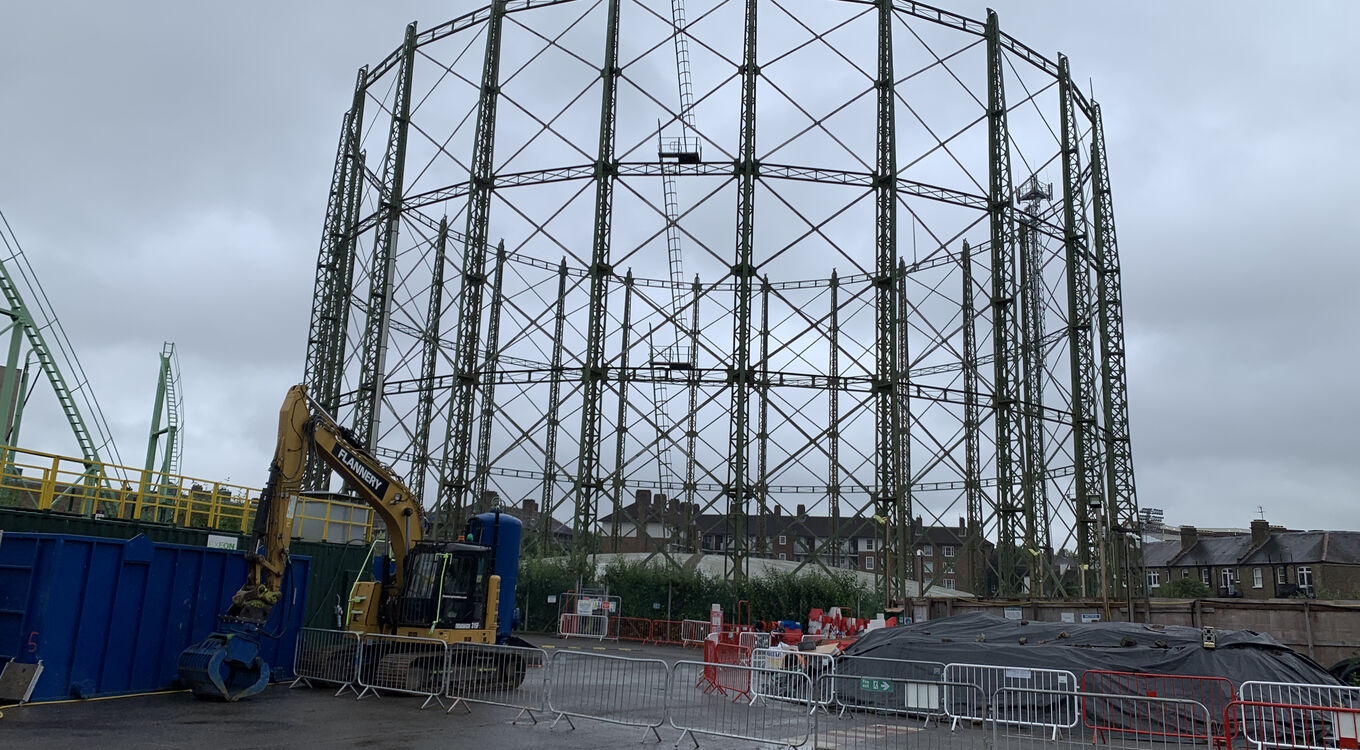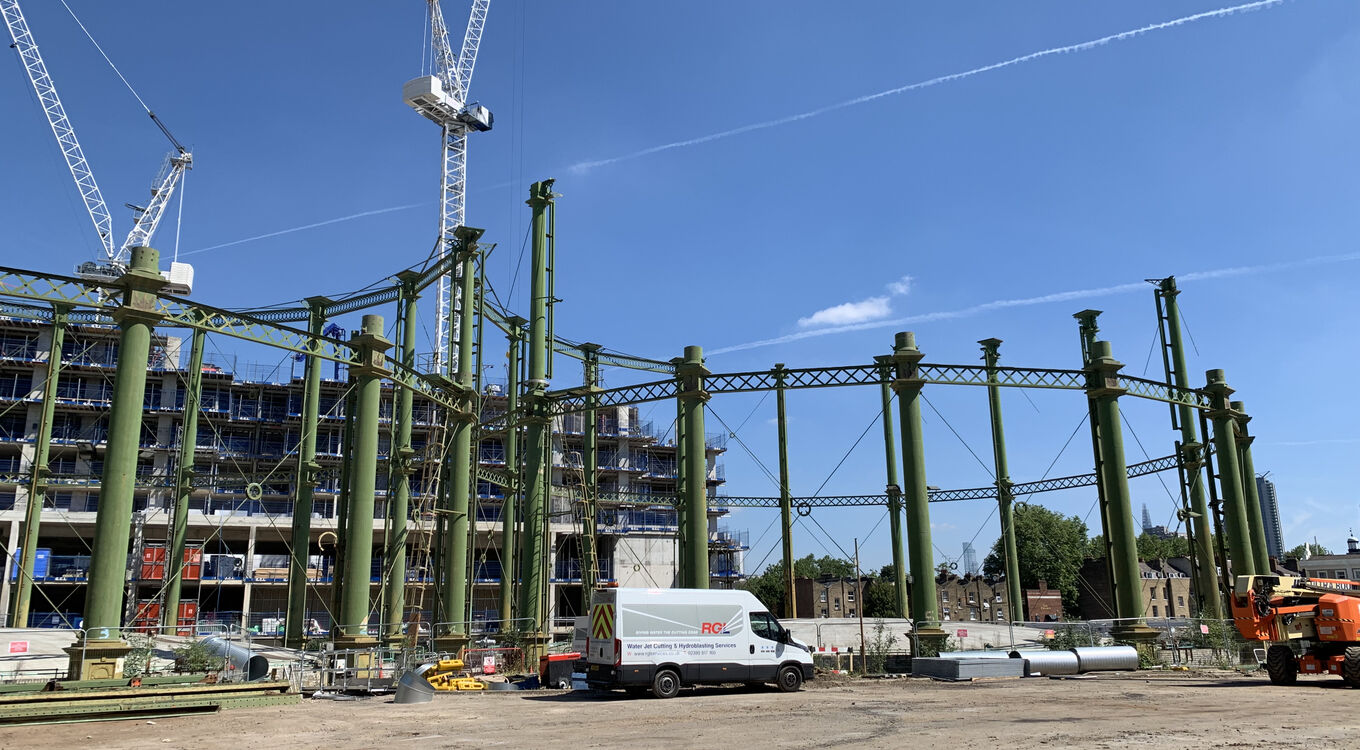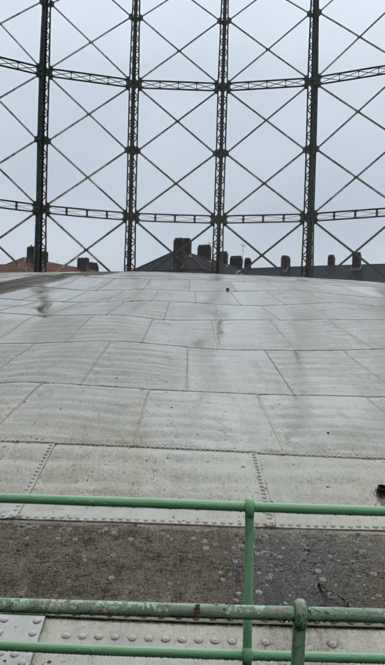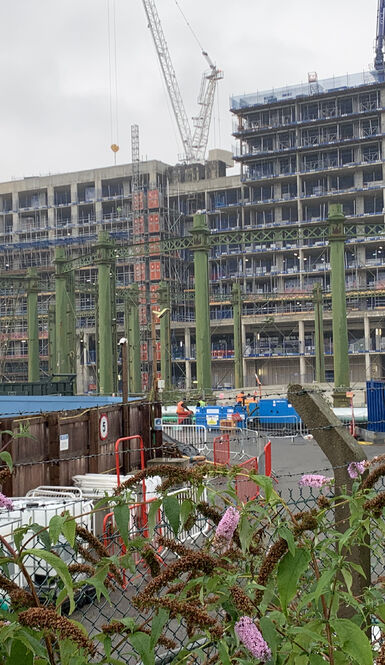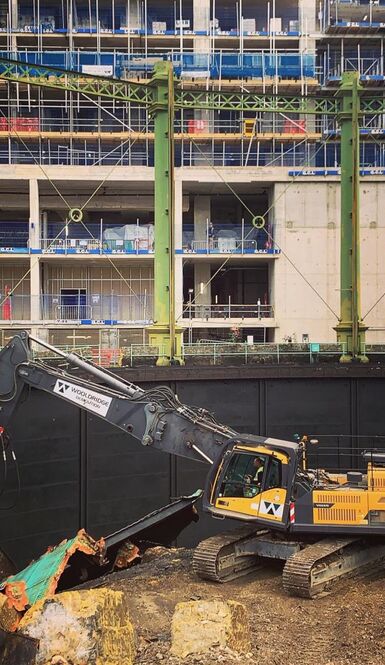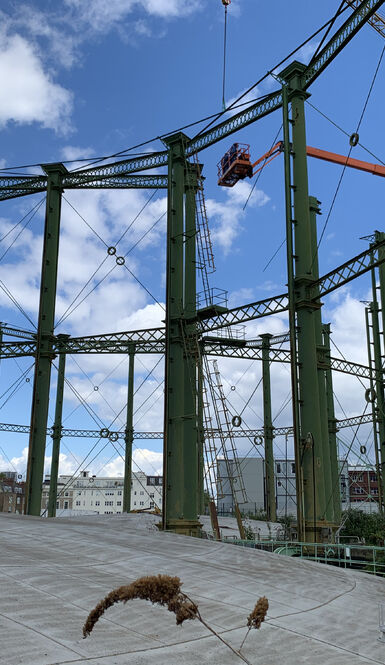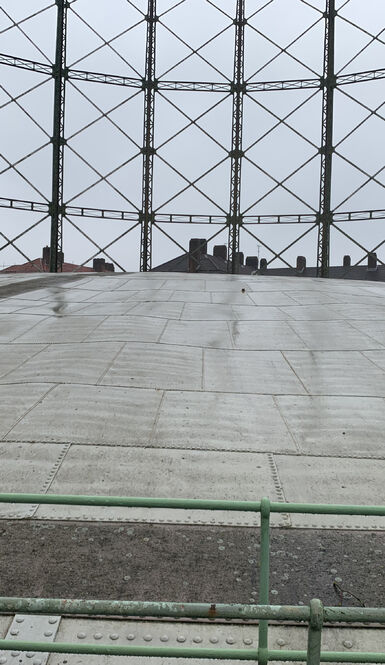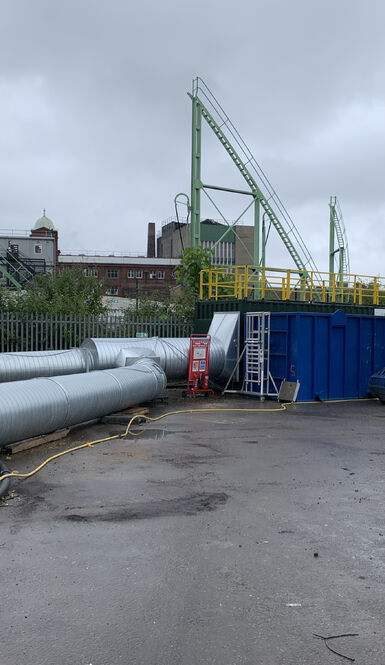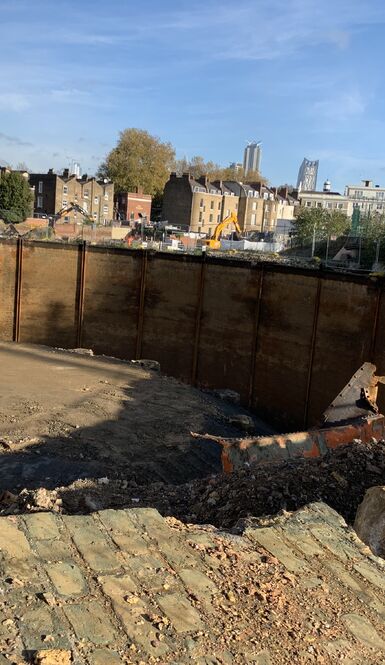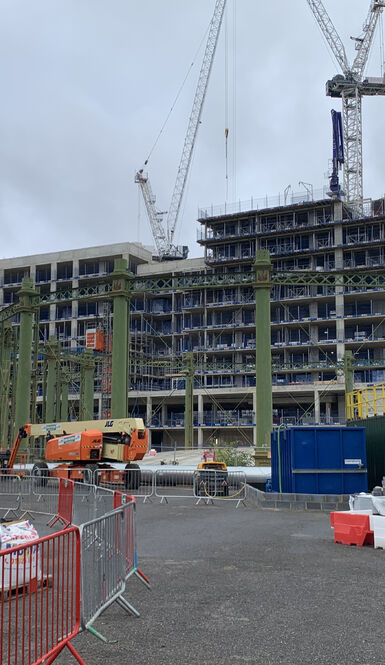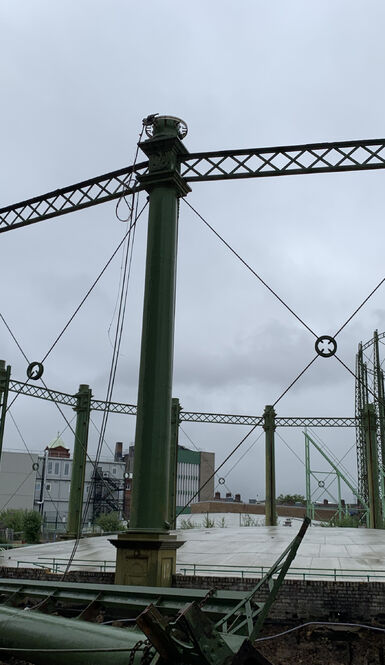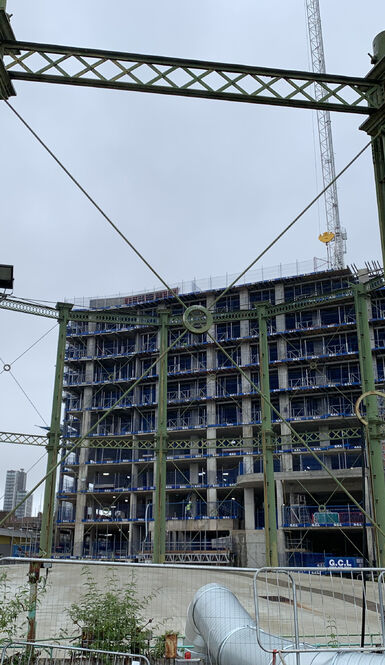- ClientSt. Edward (part of the Berkeley Homes group)
- Date2019
- RoleDemolition Consultant and CDM Advisor
- TeamStephen McCann - Mick Daynes - Yazan Osaily
We worked for St. Edward (part of the Berkeley Homes group) on the decommissioning and demolition of the former four gasholders and ancillary structures on the iconic Oval Gas Works, which was at one stage the largest gas works in Europe located in the built-up area of Vauxhall in London.
This project consisted of four gasholders of two different types: one being a spiral guided below ground gasholder, and three column guided below ground gasholders.
Additional issues were added as one of the tanks columns were designated as grade-2 listed by Historic England, and two of the tanks (GH4 and GH5), referred to as the Siamese Twins, shared a column leg and had to be dewatered at the same rate due to their proximity to each other.
The work was further complicated by the construction of a large concrete frame building on site in phase one, which reduced the working area significantly. This was due to the 2019 International COVID-19 Pandemic impacting the phasing of the demolition and the new build packages.
The contract was awarded to the contractor who promised: “No persons on and no persons in the Gas Holders”, which was ambitious but was ultimately achieved as was the requirement of not using oxy-propane hot cutting equipment on the tanks.
The tanks were constructed of steel and measured approximately 100 metres in diameter, and 15 metres deep, with 41 metres high column legs (GH1); approximately 80 metres in diameter, and 15 metres deep (GH2); approximately 70 metres in diameter, and 15 metres deep (GH4 and GH5).
Site overview video:
We were appointed as the demolition consultants for the project and then we took over the CDM Advisor role for the demolition phase of the project. We first checked the content of the Pre-Construction Information (PCI) documents supplied by the Principal Designer and offered feedback on the documents and assisted in its development to ensure it was specific for the demolition phase before distributing them to the contractors.
We then conducted a project-specific competence assessment for each contractor on the tender list discussing the contractor's overall capabilities, including available resources and any potential required resources (critical path items) to ensure the work is carried out safely and to the program. We then advised the client on the most suitable contractors that are capable of undertaking the work.
We attended the pre-appointment meetings with the client and provided feedback on the tendering contractors to rank the bidders based solely on the quality of the submissions to ensure the best contractor was selected.
A further high-risk package review meeting was carried out with the successful contractor prior to the pre-start meeting. The meeting involved both the contractor and the client to further focus on the specifics of the site since it was a former gas installation and a high-risk city centre contract.
Once the contractor’s Construction Phase Plan (CPP) was completed, we were tasked with reviewing the plan and the Risk Assessment and Method Statement (RAMS) for the project and continually commenting on the revisions and updates of both sets of documents.
Throughout the works, we carried out monthly audits that were planned to coincide with the specific phases of the project, which included specific environmental audits, CDM compliance audits, and process-specific demolition audits.
- Carry out a consultation on the tender list.
- Produce the Designer Key Hazards.
- Carry out Contractor Competence Reviews.
- Produce the Pre-Construction Information.
- Carry out a Pre-Demolition BREEAM survey.
- Attend the bid meetings and provide feedback on the submissions.
- Review and comment on the Construction Phase Plan and issue a report.
- Review and comment on the Risk Assessments and Method Statement and issue a report.
- Carry out the pre-start site audit and issue a report.
- Carry out monthly site audits and issue a report on the progress.
- Carry out the completion site audit and issue a report.
- Ensure the completion of the Health & Safety File.
Need some health and safety advice?
Book a free no-obligation consultation with one of our Health & Safety consultants today


 Pricing Plans
Pricing Plans

